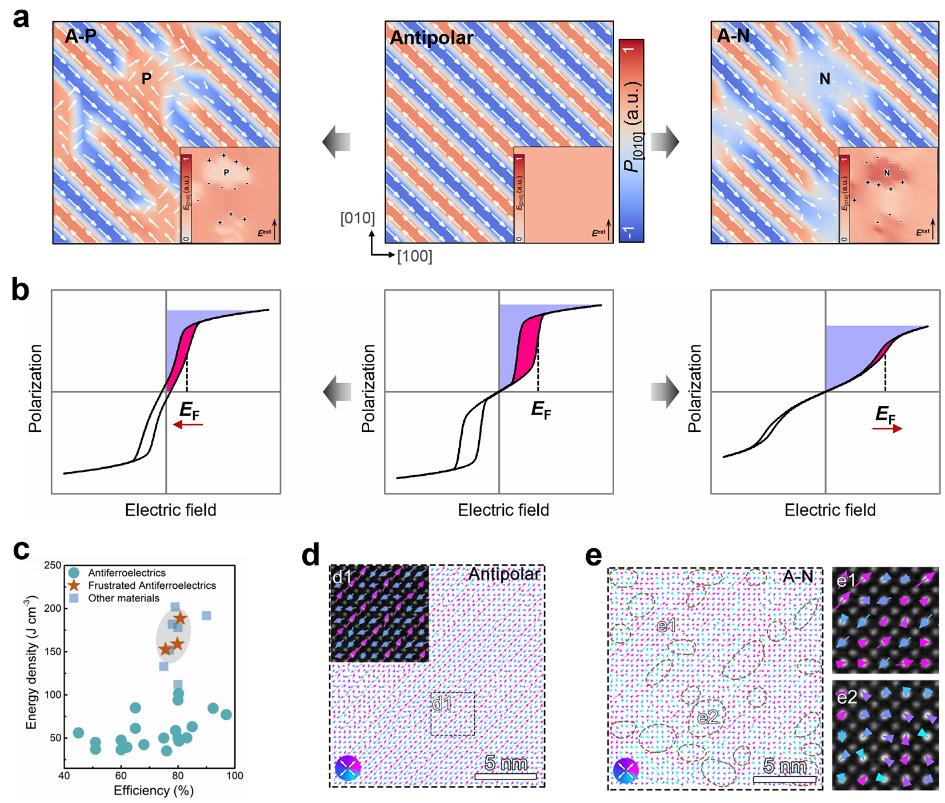
A recent collaborative study published in Nature reveals an innovative strategy to enhance energy storage in antiferroelectric materials.
The study, conducted by researchers from the Hefei Institutes of Physical Science of the Chinese Academy of Sciences, Tsinghua University, Songshan Lake Materials Laboratory, and the University of Wollongong, introduces the antipolar frustration strategy, which significantly improves the performance of dielectric capacitors that are crucial for high-power devices requiring fast charge and discharge rates.
Antiferroelectrics, which feature an antiparallel polarization configuration, are emerging as promising materials for energy storage due to their phase transition from antiferroelectric to ferroelectric under an electric field. This transition provides high polarization strength and near-zero remanent polarization, ideal for energy storage. However, challenges such as low phase transition electric fields and high energy loss during the transition have hindered their performance.
To address these challenges, the researchers introduced the antipolar frustration strategy, which involves incorporating non-polar or polar end-member components into the antiferroelectric material. This approach adjusts the phase transition electric field and reduces energy loss.
The theoretical analysis revealed that local frustration induced by these components leads to polarization discontinuities, creating an electric field at the interface that influences the phase transition behavior. For non-polar end-member antiferroelectrics, the built-in electric field reduces the electric field strength needed for phase transition, and upon removal of the field, the material quickly returns to its antiferroelectric state, lowering energy loss.
Experimental results based on lead zirconate confirmed the theoretical predictions. By introducing non-polar phases, the long-range antipolar order of the material was disrupted, forming a coexisting structure of antipolar and non-polar regions. This led to a significant improvement in energy storage density, achieving 189 J/cm³ with an efficiency of 81%.
This study provides new insights into the design of dielectric energy storage materials and presents a novel theoretical approach to configuring polarization for improved performance.

Antipolar frustration design and energy storage performance in Antiferroelectrics. (Image by YANG Bingbing)

86-10-68597521 (day)
86-10-68597289 (night)

86-10-68511095 (day)
86-10-68512458 (night)

cas_en@cas.cn

52 Sanlihe Rd., Xicheng District,
Beijing, China (100864)

